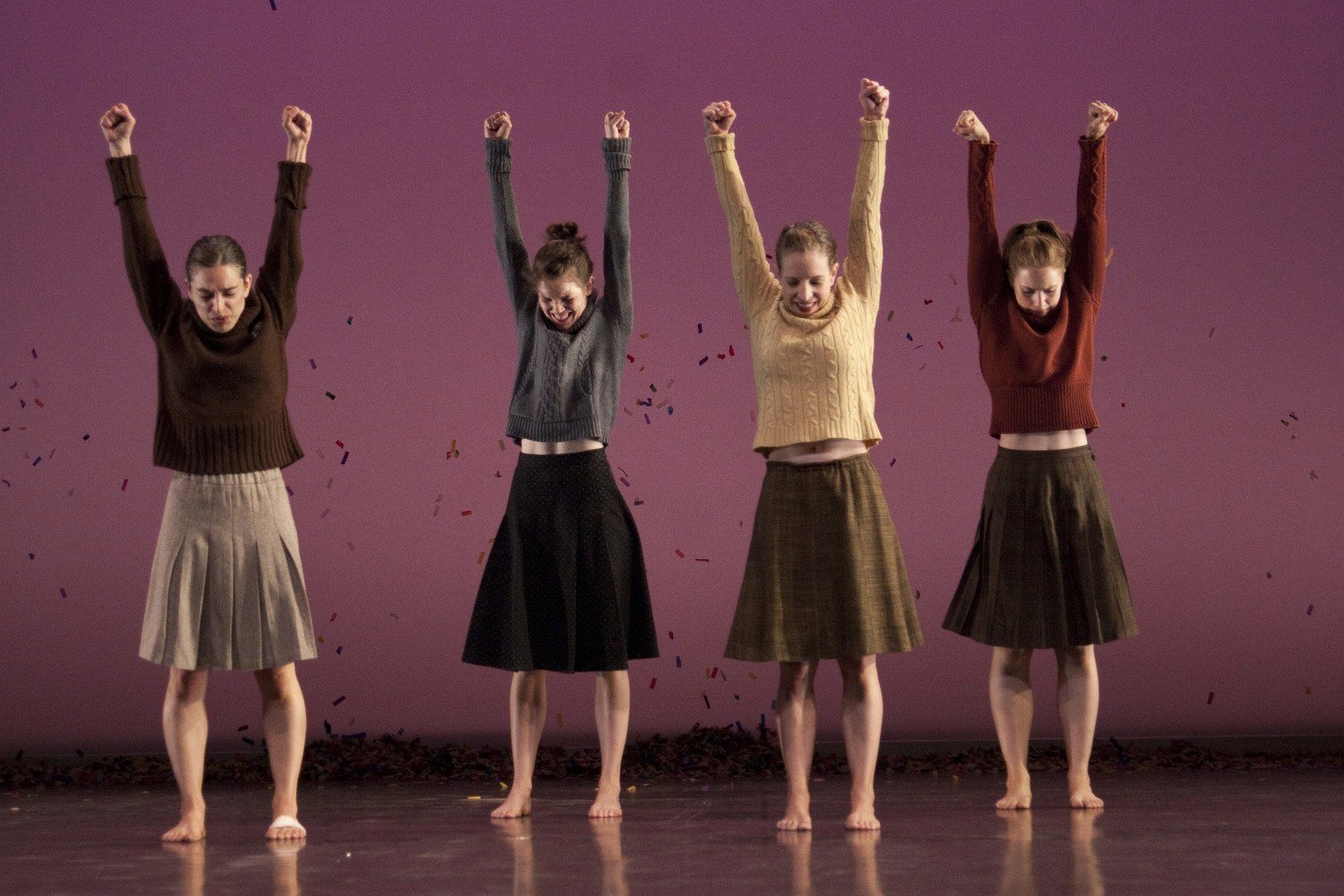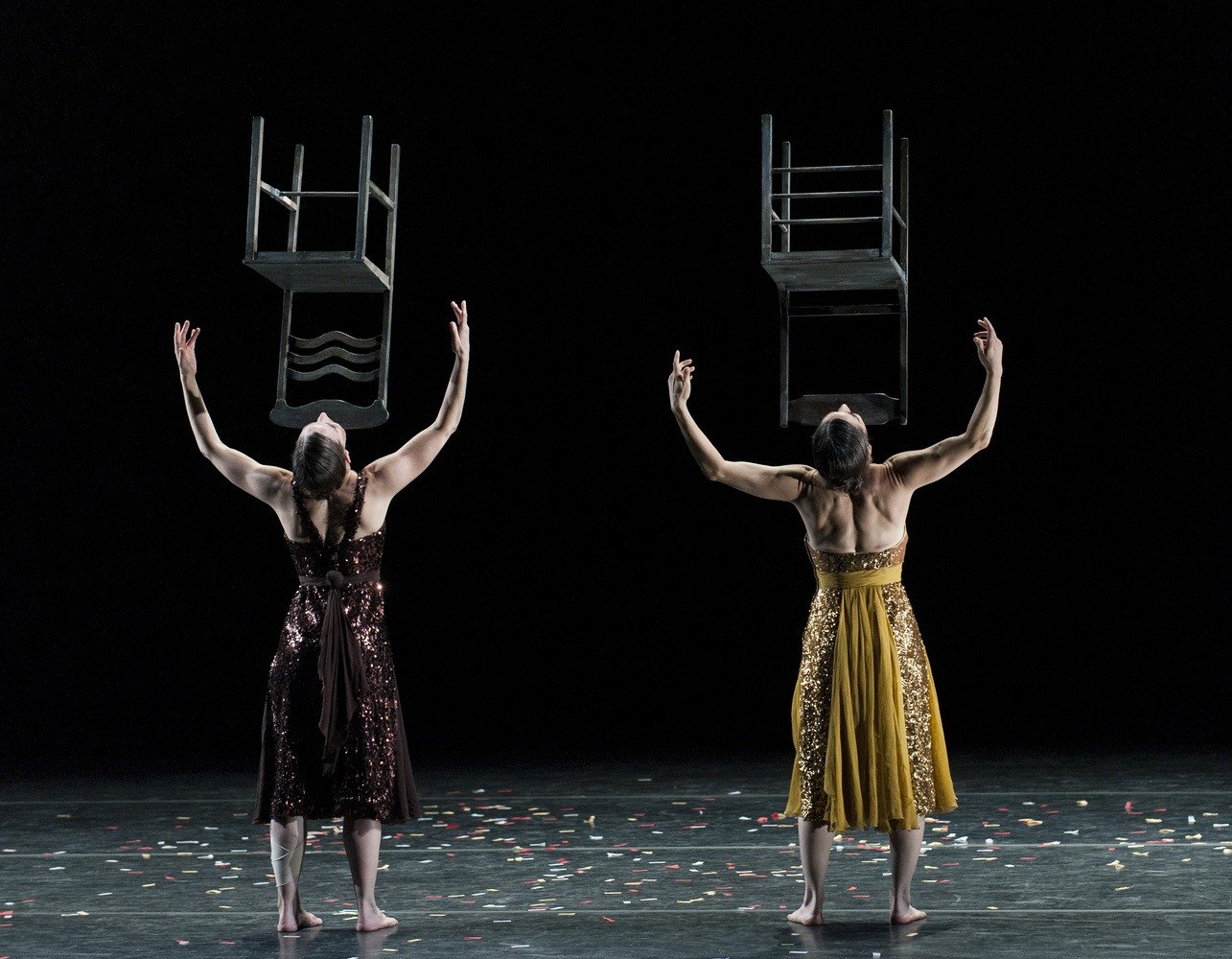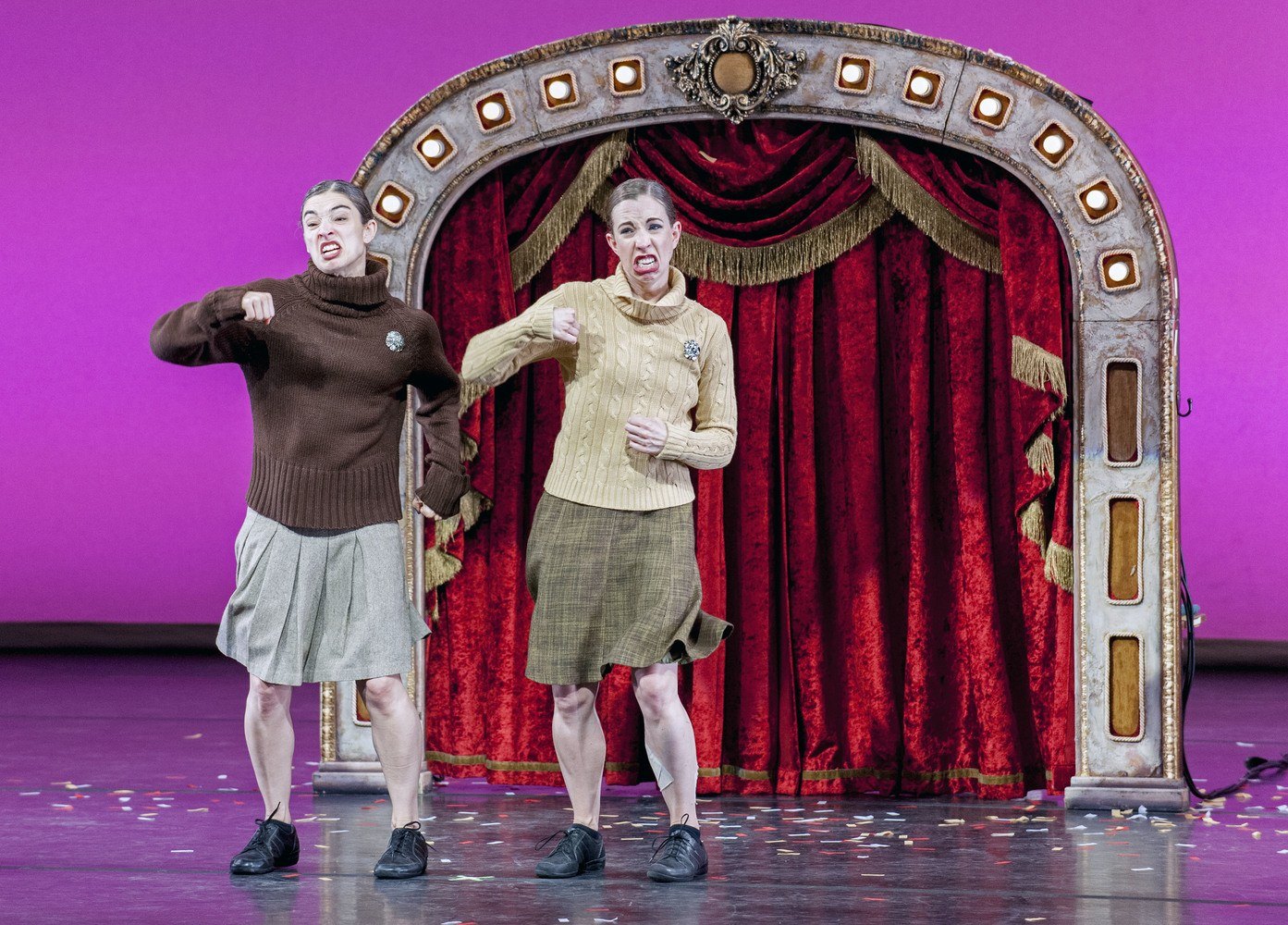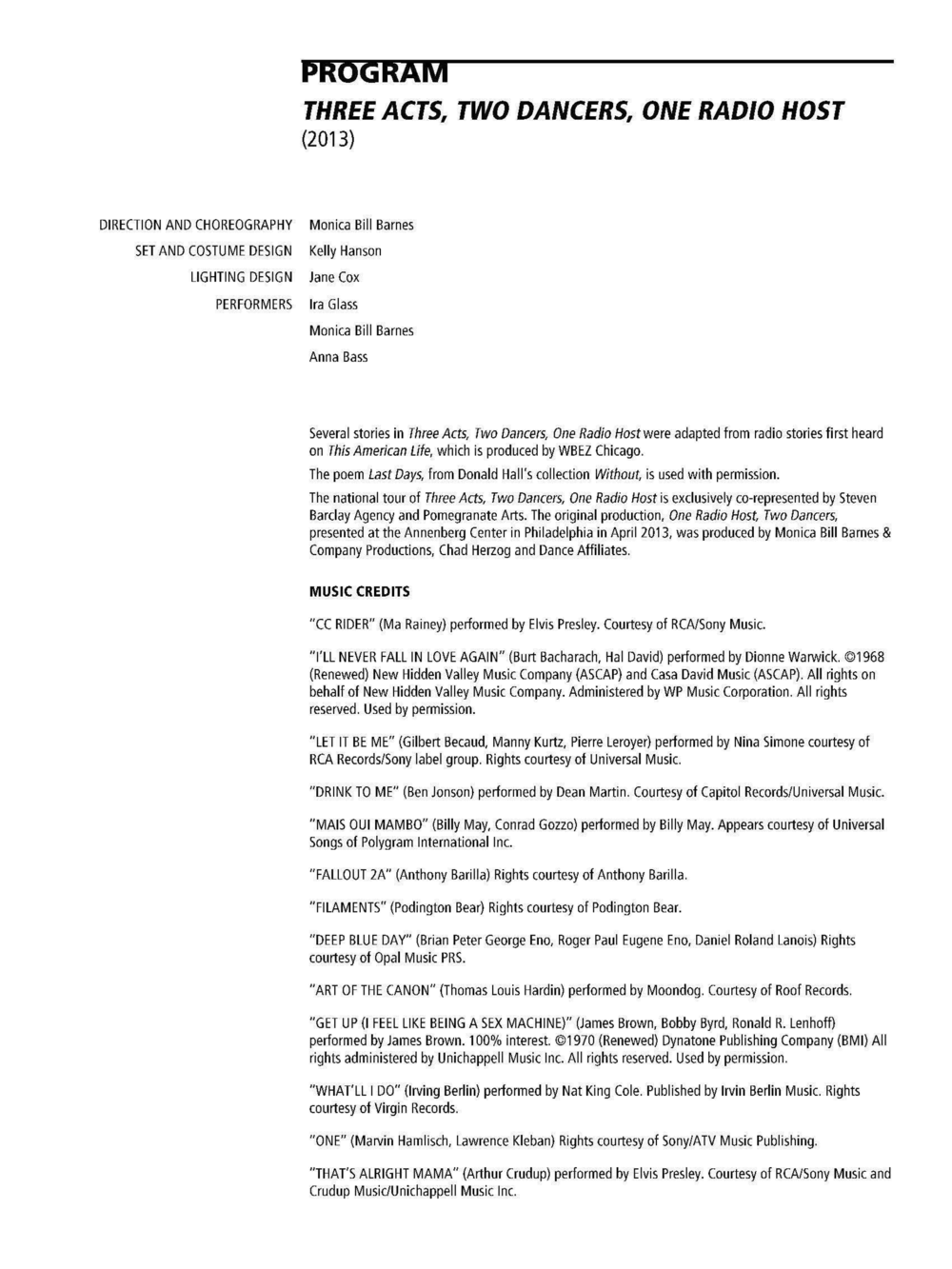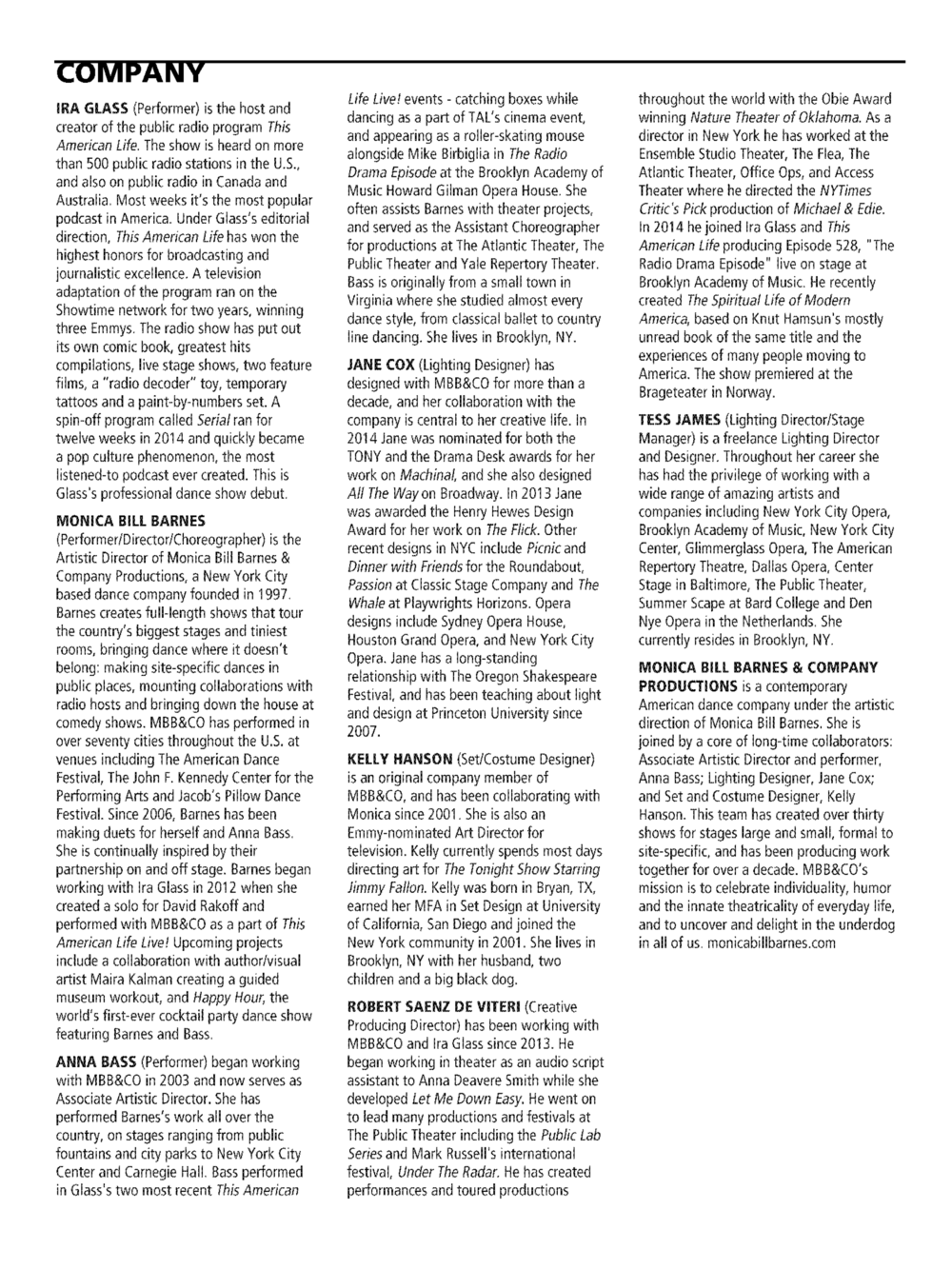Introduction
Common sense and a sense of humor are the same thing, moving at different speeds. A sense of humor is just common sense, dancing."
When choreographer Monica Bill Barnes first starting making work, she was taken aback by reviews from critics and reactions from audience members. She commented in an interview: “I actually seldom intend to be funny. When people first started writing about me, they would say, ‘That was so funny!’ And at first that sort of hurt my feelings because the piece was intentionally tragic.” Michelle Vellucci, “Exclusive: Monica Bill Barnes is Not Just Another Nut on the Street.” Flavorwire.com posted March 6, 2009 The visceral and emotional center of Barnes’s work lies in this deliberate disconnect between what she explores and what we see. It brings to mind the old adage, attributed to Carol Burnett among many others, that comedy is simply tragedy plus time.
So what is it that’s funny? The movement itself, seeing a group of women in a deadly serious bout of shadow boxing giving way to a little hip waggle into the unfurling of an attitude turn. The incongruity of a petite body next to a lanky one—this is no corps de ballet with visual symmetry. The juxtaposition of Bach and James Brown and how the dancers respond—or not—to the different music. The studied contrasts between the abstract and the ordinary that seem unexpected and yet inevitable.
Move to New York
Barnes arrived in New York from California as a solo artist, and for the first few years, as she has said, her dances were just her and whatever she could carry in a suitcase. Critics, who can be notoriously difficult, were charmed. Jennifer Dunning, in the New York Times called Once I Was in a Beauty Contest, But My Strap Broke one of Barnes’s first solos, a “comic delight. Barnes is an impudent flea of a dancer…and the solo made perfect sense as a zany, purely physical response to the music.” The New Yorker proclaimed, “Monica Bill Barnes (is) the downtown darling.” Dance Insider (Chris Dohse) wrote, “Better than a bra burning, this is unapologetic, inclusive, baseline feminism.”
Barnes knows that the gestures and actions of everyday life are full of both emotional and movement potential. This legacy of trusting the body to communicate with nuance and pathos comes not just from the world of modern dance, but also from the rich history of physical comedy. One need only think of Buster Keaton’s deadpan stoicism or Charlie Chaplin’s baggy pants and too-small jacket to discern another performance history in this company of women. With a nod perhaps to this other tradition, Barnes commented in an interview:
I have a real interest in having dance be something that’s very popular—not necessarily accessible, which sometimes in the arts can be a bad word, but in that it exists more immediately in people’s lives.”
Once Barnes got a reputation as being funny, what is expected of us as audience members? Do we dare laugh? The worlds created on Barnes’s stage feel familiar; we can’t help but see our own lives. The wittiness to which we respond has a personal feeling, similar to the way we can laugh at our own foibles or embarrassments in retrospect. She and her dancers invite us to share in the humor of life’s little miseries. As an artist, Barnes knows that she must decide, “what you end up exposing and what you keep to yourself.” Over the course of her career, Barnes has made work both for the stage and for sites where dance might be unexpected.
Some of Barnes’s works are enhanced by theatrical elements, like the dining table and chairs that are the set for the duet Suddenly Summer Somewhere (2007). Other pieces deliberately hint at the absurd, such as Limelight the Fountain Tour (2006), which, as the title suggests, takes place in a fountain. Happy Hour (2015) comes with free cocktails and feels like an after work party. The Museum Workout (2017) takes place in the Metropolitan Museum of Art. Her collaboration with longtime dancer Anna Bass and This American Life host Ira Glass Three Acts, Two Dancers, One Radio Host (2013) was seen at Jacob’s Pillow in 2015.
A throughline in all of her works is the dancing: slippery and full-bodied, precise and abandoned. Barnes and the dancers have deeply explored the movement styles they inhabit. Thoughtful craftsmanship presents women who are alternately sexy and invincible, and then exposed and awkward. Gestures, social dances, and virtuosic contemporary dance languages work in concert with one another to build complex worlds. And it is Barnes’s artful distillation of multiple elements that creates works that sparkle.
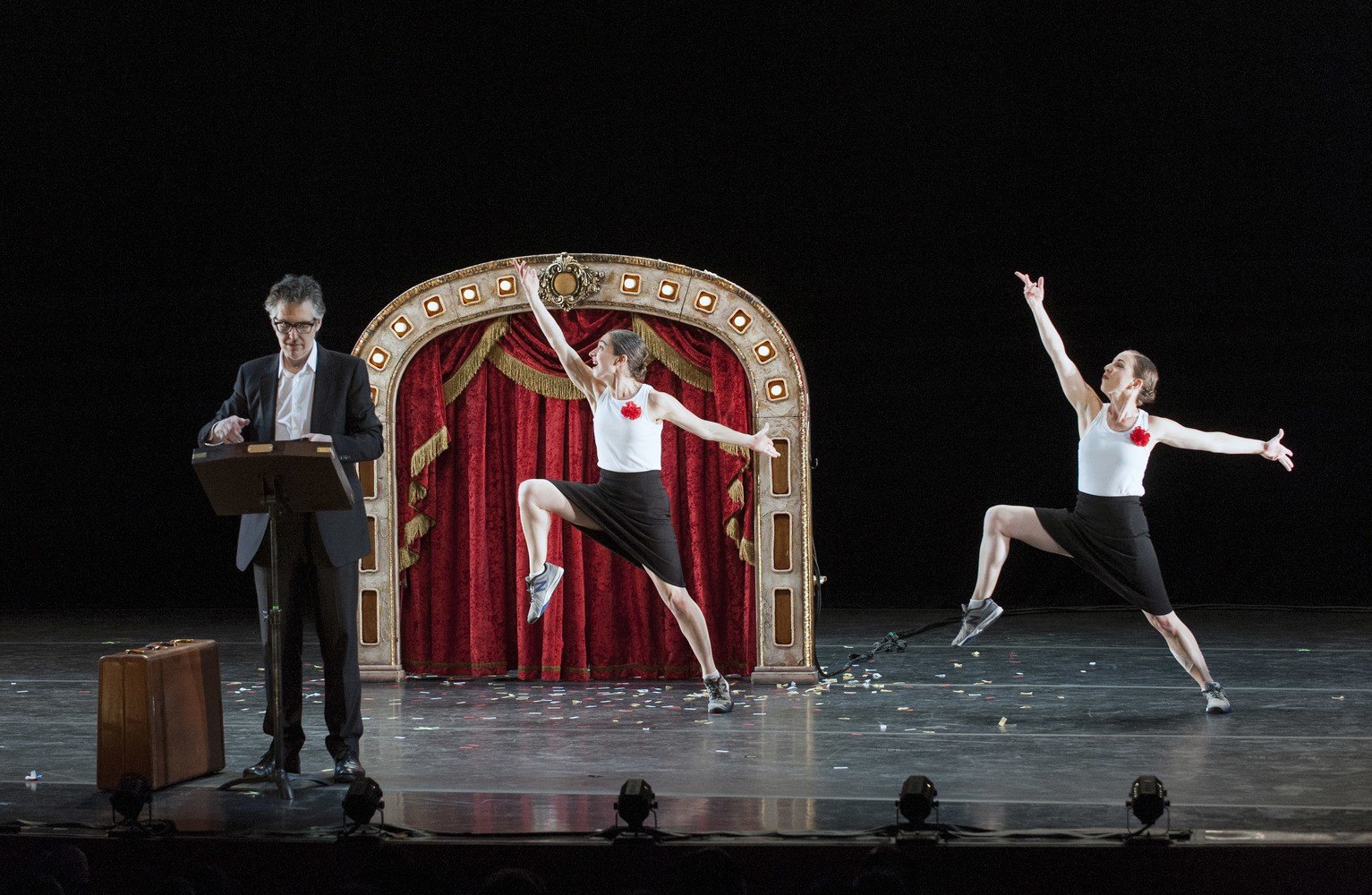
PUBLISHED November 2017
